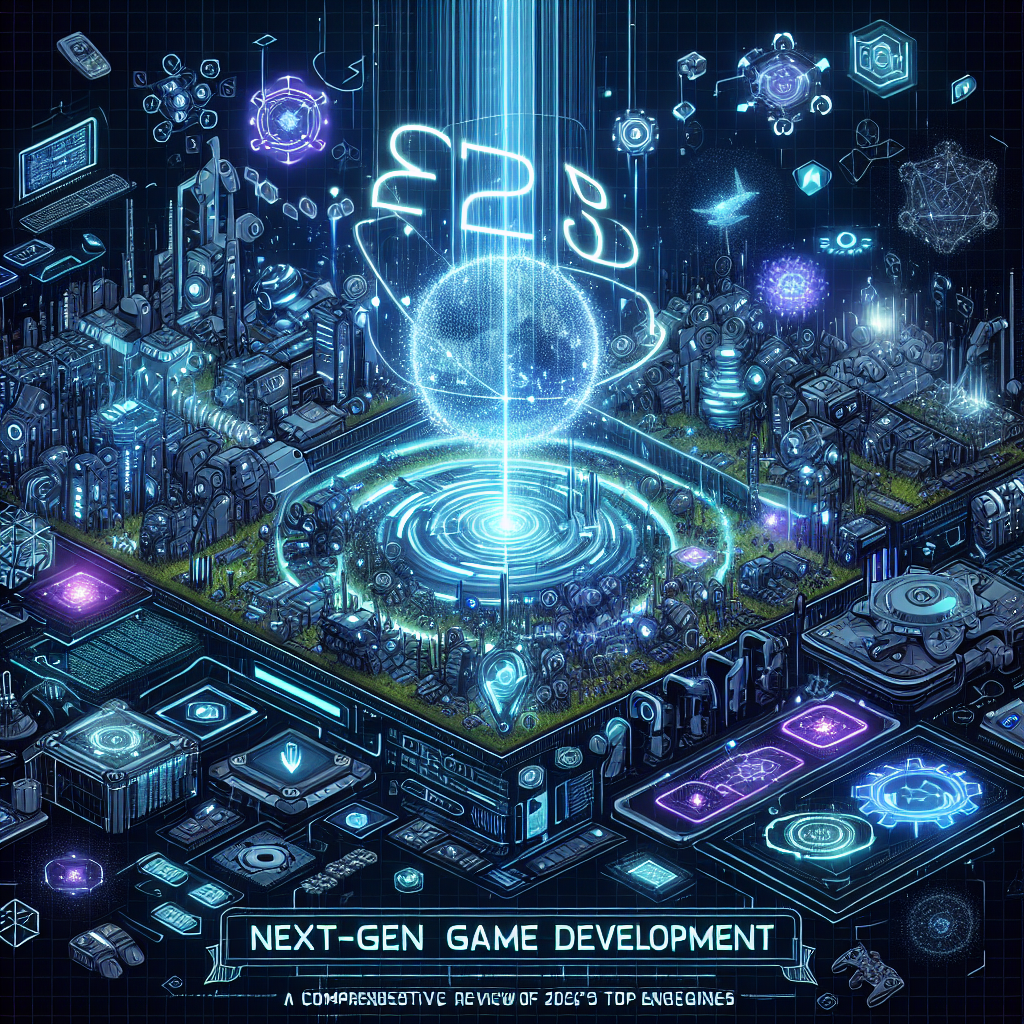Next-Gen Game Development: A Comprehensive Review of 2025’s Top Game Engines
As we plunge deeper into the immersive world of video games in 2025, the technology driving game development continues to evolve at a breathtaking pace. The next generation of game engines has revolutionized the industry, making high-fidelity graphics, advanced physics simulations, and complex AI behaviors accessible to developers of all sizes. This article provides a comprehensive review of the top game engines currently leading the charge in next-gen game development.
1. Unreal Engine 5 (UE5)
Overview
Unreal Engine 5 has solidified its position as a powerhouse in game development, dominating the scene since its inception. Its cutting-edge features such as Nanite, a virtualized geometry system, and Lumen, a fully dynamic global illumination system, empower developers to create visually stunning environments with unprecedented detail.
Key Features
- Nanite: Allows for incredibly detailed assets without worrying about polygon counts, ensuring that every surface reflects high fidelity.
- Lumen: Provides real-time lighting solutions, enabling creators to simulate how light interacts with objects and surfaces in a realistic manner.
- MetaHuman Creator: A revolutionary tool for creating lifelike human characters effortlessly.
- Robust Marketplace: A vast ecosystem of assets, plugins, and blueprints available for developers.
Pros and Cons
Pros: Extremely powerful graphical capabilities; strong community and support; versatile for all kinds of games.
Cons: Steep learning curve for beginners; may require high-end hardware for optimal performance.
2. Unity 2025
Overview
Unity remains a popular choice for indie developers and large studios alike, thanks to its robust toolset and user-friendly interface. With the 2025 update, Unity has emphasized augmented reality (AR) and virtual reality (VR) capabilities, making it an ideal platform for immersive experiences.
Key Features
- Multiplatform Support: Unity easily adapts to numerous platforms, making it a favorite for cross-platform development.
- Cinemachine and Timeline: Allows for dynamic camera control and sequencing, offering a cinematic quality to games.
- Visual Scripting: Enhances accessibility for non-coders, letting designers implement logic without deep programming knowledge.
- AR Foundation: A framework for developing AR applications, bridging the gap between physical and digital spaces.
Pros and Cons
Pros: User-friendly; vast tutorials and resources available; versatile and adaptable across genres.
Cons: Graphics can lag behind Unreal in high-end applications; some features require additional plugins.
3. CryEngine 5.7
Overview
CryEngine has been a frontrunner in delivering exceptional graphics and physics simulations since its debut. The latest version, 5.7, continues this tradition, providing tools for creating extraordinarily realistic environments that captivate players.
Key Features
- Real-time Rendering: Offers exceptional depth of field, volumetric lighting, and reflections that set a high bar for visual fidelity.
- Flow Graph: A powerful visual scripting solution that allows developers to create game logic without traditional coding.
- Terrain Editor: Advanced tools for designing expansive landscapes with intricate details.
Pros and Cons
Pros: Stunning graphics; powerful physics engine; excellent for open-world games.
Cons: Smaller community compared to Unity and Unreal; may require higher technical expertise to fully leverage its capabilities.
4. Godot Engine 4.0
Overview
Godot has rapidly gained traction as an open-source alternative for indie developers and smaller studios. With the release of Godot Engine 4.0, the platform has enhanced its capabilities significantly, introducing 3D improvements while retaining its strong 2D support.
Key Features
- Scene System: Facilitates easy management and nesting of game objects, streamlining the development process.
- GDScript 2.0: An optimized scripting language that enhances performance while being easy to learn for beginners.
- Customizable Pipeline: Supports a flexible rendering pipeline allowing developers to tailor graphic output to their needs.
Pros and Cons
Pros: Open-source and free; highly customizable; excellent for both 2D and 3D.
Cons: Smaller community and fewer resources than larger engines; visual quality may lag behind Unreal or CryEngine.
5. Amazon Lumberyard
Overview
Amazon Lumberyard, though initially overshadowed by other engines, has made substantial improvements in 2025, particularly in its integration with AWS services. This engine is a solid choice for developers looking to leverage online features and robust backend solutions.
Key Features
- Integration with AWS: Seamlessly connect your game to Amazon’s cloud services for multiplayer features, storage, and more.
- Twitch Integration: Allows developers to create engaging interactions for streamers and their audiences directly in games.
- Visual Scripting: Offers tools similar to Unreal’s Blueprints, enabling designers to work without heavy coding.
Pros and Cons
Pros: Strong network capabilities; excellent for games focused on online interactions; free to use without royalties.
Cons: Still maturing, leading to fewer community resources; less polished than competitors in certain areas.
Conclusion
The landscape of game development in 2025 is vibrant and diverse, with several powerful engines available to suit different types of projects and developer skills. Whether you are aiming for hyper-realistic graphics, innovative gameplay mechanics, or immersive storytelling, there is a game engine tailored to your needs. Unreal Engine 5 and Unity are prime contenders for AAA development, while Godot offers an ideal platform for indie developers seeking flexibility and accessibility. Meanwhile, CryEngine and Amazon Lumberyard stand out with their specialized features, catering to developers aiming for unique experiences.
As we move forward, the choice of a game engine will undoubtedly shape the next wave of gaming experiences. The future is bright for both developers and players, with endless possibilities on the horizon.




